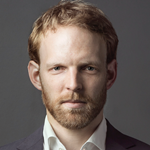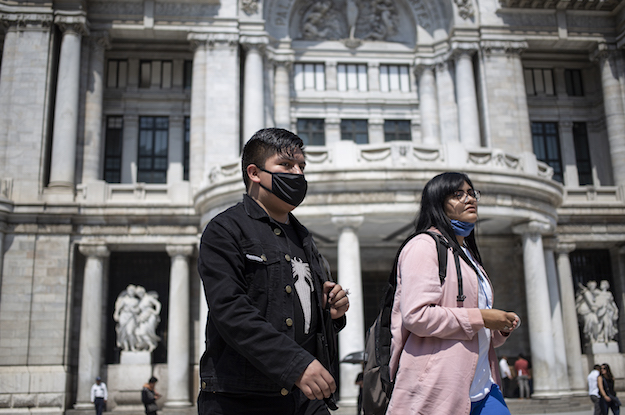Ideological divisions and weak heads of state have undermined Latin America’s ability to engage in dialogue, even as the region faces its most profound challenges of the last three decades. The lack of a coherent response to last year’s fraught Bolivian election and the region’s inability to influence events in Venezuela are just two examples of Latin America’s foreign policy vacuum. Unfortunately, it’s hard to imagine any of the region’s current leaders coming in to fill the void.
Indeed, as Latin America’s presidents look inward, the region is suffering from a lack of vision as to how to face issues like transnational crime, climate change and deforestation. But none of these can be tackled alone. The same is true of growing U.S.-China tension, which has strongly affected the region, and the gap in physical infrastructure that Latin America needs to fill in order to boost economic growth.
This lack of leadership was acutely felt in what was a terrible 2019 for much of the region. Mass protests, political instability, economic stagnation and an ongoing humanitarian catastrophe in Venezuela (which could soon become the world’s worst migration crisis) hurt Latin America’s reputation abroad and challenged its policymakers at home.
Democracy is under strain in the region’s two largest countries. Brazilian President Jair Bolsonaro, already the world’s environmental enemy number one for his response to the Amazon fires, made global headlines for systematically seeking to undermine his country’s institutions, attacking civil society and eroding democracy. In the same way, his Mexican counterpart Andrés Manuel López Obrador has severely weakened many of the checks and balances that have been strenuously established in Mexico over the past decades.
In Argentina, Mauricio Macri’s attempt to stabilize the economy, aided by the IMF, backfired spectacularly, increasing the chances of yet another default. The situation is hardly better in Central America, where both Nicaragua’s Daniel Ortega and Honduran President Juan Orlando Hernández are overseeing authoritarian crackdowns, and the latter is presiding over a bloody war on drugs and a migration crisis without an easy way out.
One of the main underlying causes for this political instability and the breakdown of regional cooperation in Latin America is that low commodity prices and an otherwise unfavorable economic scenario have led to lower growth, reduced social spending, less tolerance for corruption, falling approval ratings and social upheaval. According to the Economic Commission for Latin America and the Caribbean (ECLAC), Latin America grew 0.1% in 2019, in a projection that does not yet fully account for the consequences of political upheaval in Colombia, Chile and Bolivia, the continent’s better-performing economies. Meanwhile, the region’s GDP per capita shrank by 4% between 2014 and 2019.
Having to focus on internal challenges, presidents have let foreign policy fall by the wayside. The most dramatic example is Chile’s President Sebastián Piñera, who was forced to cancel an APEC Summit and COP-25 in late 2019 due to massive protests across the country. For his part, Macri began his term with an ambitious foreign policy, but in 2019 had to focus all his energy on avoiding a meltdown of Argentina’s economy. His center-left successor, President Alberto Fernández, lacks a kindred spirit in South America and took his first international trip to Mexico, which is led by a president who is famous for avoiding international travel altogether. Venezuela’s President Nicolás Maduro is no longer recognized by most of his regional peers. Finally, center-right leaders across Latin America are uncomfortable at being seen as close to the far-right Bolsonaro, who finds himself increasingly isolated in the West.
What’s more, the dominant dynamic in Latin American elections has been anti-incumbent, and almost all countries have a first term president – a sharp contrast with the leaders who enjoyed the commodity boom of the 2000s, and were able to get re-elected and essentially name their successors. As a consequence, crises such as those in Venezuela, Bolivia, Nicaragua or Haiti are now being left to fester, and there is little to prevent additional crises from breaking out.
Where does that leave the region in 2020? Most likely with a continued absence of regional cooperation and meaningful dialogue, and a significant risk for further turbulence. This is in part because in addition to stagnant economies – ECLAC projects regional growth of 1.4% this year – a new middle class across Latin America is now more politically aware and demanding, while political elites and governance structures have failed to adapt.
Indeed, things could get significantly worse on several fronts. It remains uncertain whether the authoritarian instincts of Bolsonaro and López Obrador can be contained. Both view their country’s institutions as obstacles, not unlike former regional leaders such as Hugo Chávez and Alberto Fujimori. Both Bolsonaro and López Obrador regularly attack domestic and international media, academics, civil society and independent government agencies. Given their size and influence in the region, the state of democracy in Mexico and Brazil will have a big impact on Latin American politics as a whole.
It is equally uncertain whether the deeply frayed relationship between Brazil and Argentina can be preserved. After a rough start – Bolsonaro has described Fernandéz as a “leftist bandit” – both sides have toned down the rhetoric. But South America’s two largest economies, whose partnership served as a pillar of stability over the past decades, are unlikely to develop a functional working relationship in the coming year.
Finally, even if Chile’s plebiscite in April eventually leads to a new constitution and a better, more egalitarian society, its immediate economic outlook is bleak. Investors are likely to wait to learn what kind of constitution the country will adopt. Right now, even optimistic Latin America watchers are struggling to point to a hopeful story.









